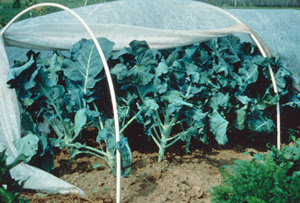Growing Kale: A Complete Guide
Kale is one of the most nutritious and versatile leafy greens you can grow in your garden. It's relatively easy to cultivate, cold-tolerant, and provides harvests for months. Here's everything you need to know to grow healthy, productive kale plants.
Planting Basics
Germination
- Days to germination: 5-8 days
- Soil temperature for germination: 45-85°F (7-29°C), with optimal germination at 70-75°F (21-24°C)
- Seed depth: Plant seeds ¼ to ½ inch deep
Spacing
- Between plants: 12-18 inches
- Between rows: 18-24 inches
- For baby kale: Can be planted more densely at 4-6 inches apart if harvesting young
Growing Conditions
Light Requirements
- Full sun: 6+ hours in cooler climates
- Partial shade: Recommended in hot summer regions (afternoon shade can prevent bolting)
- Light quality: Kale thrives in bright, consistent light but appreciates protection from intense afternoon sun in hot regions
Temperature Preferences
- Optimal growing temperature: 60-70°F (15-21°C)
- Cold tolerance: Survives down to 20°F (-6°C); flavor actually improves after light frost
- Heat tolerance: Struggles in temperatures above 80°F (27°C) and may become bitter or bolt
Soil Requirements
- pH: 6.0-7.0 (slightly acidic to neutral)
- Soil type: Rich, well-draining soil with high organic matter
- Amendments: Work in compost before planting; kale is a heavy feeder
Planting Timeline
- Spring planting: 3-5 weeks before last frost
- Fall planting: 6-8 weeks before first fall frost (for fall/winter harvest)
- Growing zones: Grows well in USDA zones 3-9
Care & Maintenance
Watering
- Consistency: 1-1.5 inches of water per week
- Moisture level: Keep soil consistently moist but not waterlogged
- Mulching: Apply 2-3 inches of organic mulch to retain moisture and suppress weeds
Fertilization
- Initial fertilization: Mix in compost or aged manure before planting
- Ongoing feeding: Apply balanced organic fertilizer every 3-4 weeks during growing season
- Signs of deficiency: Yellowing lower leaves may indicate nitrogen deficiency
Pest Management
- Common pests: Aphids, cabbage worms, flea beetles
- Prevention: Use row covers early in the season
- Organic solutions: Neem oil, insecticidal soap, or companion planting with aromatic herbs
Harvesting
- Baby kale: Ready in 25-30 days from germination
- Mature leaves: Ready in 50-65 days from germination
- Harvesting method: Pick outer leaves first, leaving the center growing point intact
- Continuous harvest: With proper care, kale plants can produce for months
- Post-frost harvest: Sweetest flavor comes after exposure to light frost
Common Issues & Solutions
- Bolting: Caused by heat or long days; plant for spring or fall harvests
- Tough leaves: Usually from heat stress or age; harvest younger leaves
- Yellowing leaves: Often indicates nitrogen deficiency; side-dress with compost
Tips for Success
- Succession plant every 2-3 weeks for continuous harvest
- Consider kale varieties suited to your climate (Lacinato for heat, Winterbor for cold)
- Blanch and freeze excess harvest for year-round use
- Protect from harsh winter conditions with row covers in colder regions
- Use shade cloth during summer heat to extend growing season
With these guidelines, you'll be well on your way to growing nutritious, delicious kale right in your own garden. The beauty of kale is its adaptability and resilience - even novice gardeners can achieve great results with minimal effort.



.jpg)



No comments:
Post a Comment